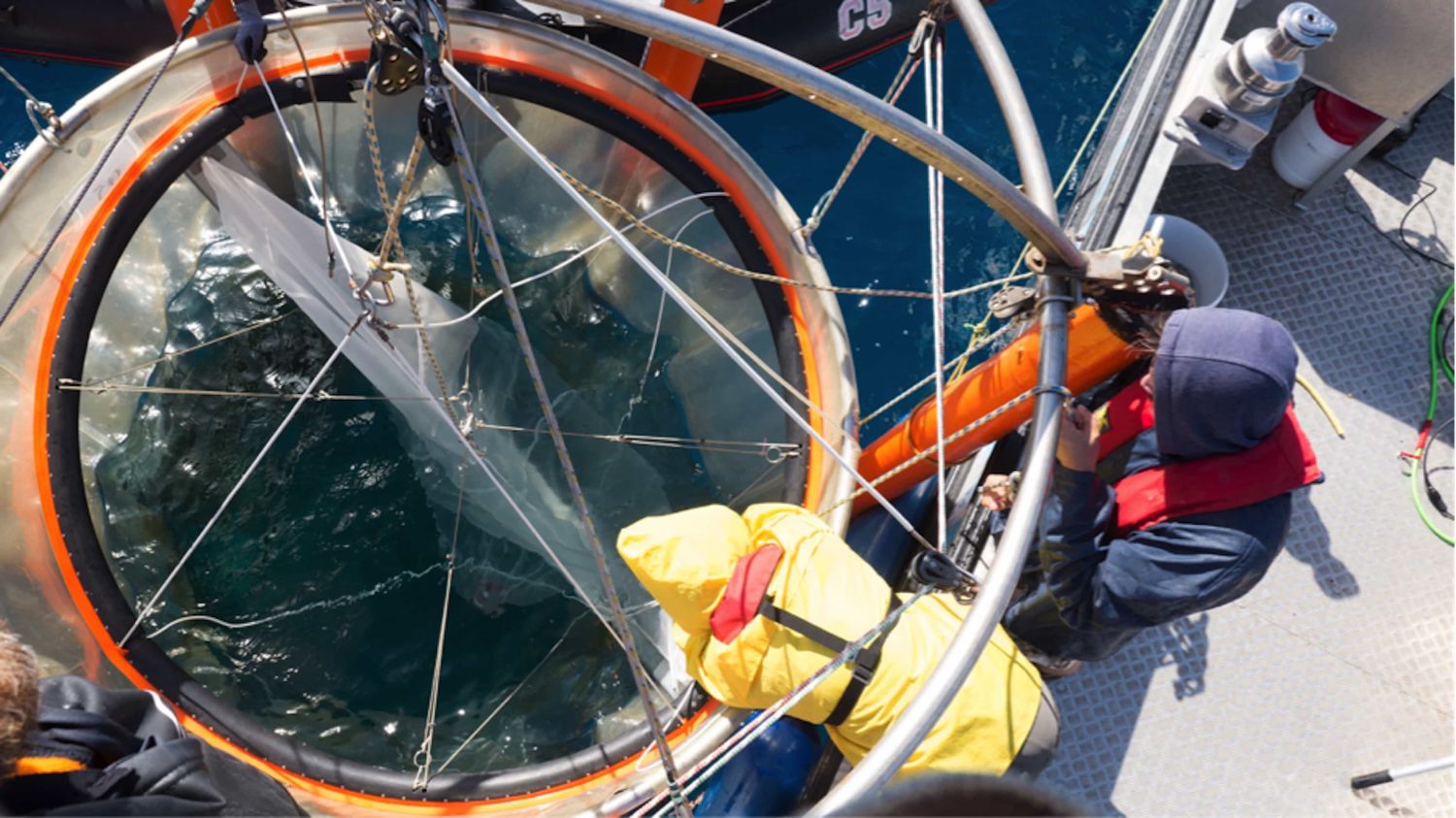A fish larva's life in the mesocosms

You may recall that we were really excited about the introduction of newly-hatched fish larvae into the mesocosms. With respect to artificial upwelling there may only be few research questions that get more attention than fish production. Thus, it was one of our key objectives to see how fish larvae would survive and grow under the different upwelling scenarios.

After two additions, a total of 1500 alive larvae of the white seabream, Diplodus sargus, were gently added to each mesocosm. Naturally, fish larvae survival is low in the first weeks after hatch, as this is the time when they have to learn to feed; and if they don´t, they starve and die. The larval stage is a critical time window in their life cycle and a bottle neck for fish production. Thus, we originally hoped to introduce even more larvae (5.000-10.000) to increase chances of surviving larvae at the end of the mesocosm experiment. But, the adult fish from which we received the offsprings had different plans in terms of mating and spawning and thus we had to take what we got.
The introduction went smoothly and in the first days we were confident that the larvae were living happily in our mesocosms. After every sampling we were asked by your colleagues whether we caught some of them and back in the lab the first question always was “Fishies?” – which nicely reflects how important and interesting fish are for everybody. However, with 1500 larvae of 3-4 mm in size in 40,000 litres of water it's not really easy to find and see them.
Luckily, in the first days after introduction, we caught several larvae with our zooplankton nets. But unfortunately, catching decreased and went to zero in one mesocosm after the other until only in one last mesocosm larvae were left, the highest upwelling mesocosm. So, we had high hopes but at the same time were quite afraid that we will not catch larvae at the end of the experiment.

Yesterday, our biggest fear became reality during the final fishing of the mesocosms. We do this with a net that has the same diameter as the mesocosm. It is folded up when lowered to the bottom of the mesocosms. After unfolding the net, it is pulled upwards through the entire water column, catching all organisms larger than the 0.5 mm mesh size. When rinsing the net samples into the buckets wecould see immediately that the nine mesocosms differed a lot in terms of how many and which organisms were caught. Later in the lab, we thoroughly examined all the samples in detail. Until early morning we checked every bit of the samples under the microscope, but despite many helping eyes we could not find any - in none of the mesocosms.

Possible reasons why no larvae survived during the first weeks of their life are either they died due to low food conditions and/or they were preyed upon by other predators in the mesocosms, such as jellyfish.
So, what do we learn from this? First of all, nature is going its own way despite the biggest efforts in planning for all circumstances in detail beforehand. Secondly, a lot of good factors have to come together to get fish larvae survive in the ocean - from thousands of eggs and larvae only a minority survives. It’s all about eat or be eaten. Third, be happy with what you get. We still caught some larvae during the course of the study and these we may use to get a better understanding of what they eat, if they may benefit from artificial upwelling and under which scenario the trophic transfer is most efficient. All of this will be analyzed back in Kiel. Until then, the larvae stay frozen in minus 80°C, while we will try to rise our spirits again with the sunshine and heat during winter on Gran Canaria.
